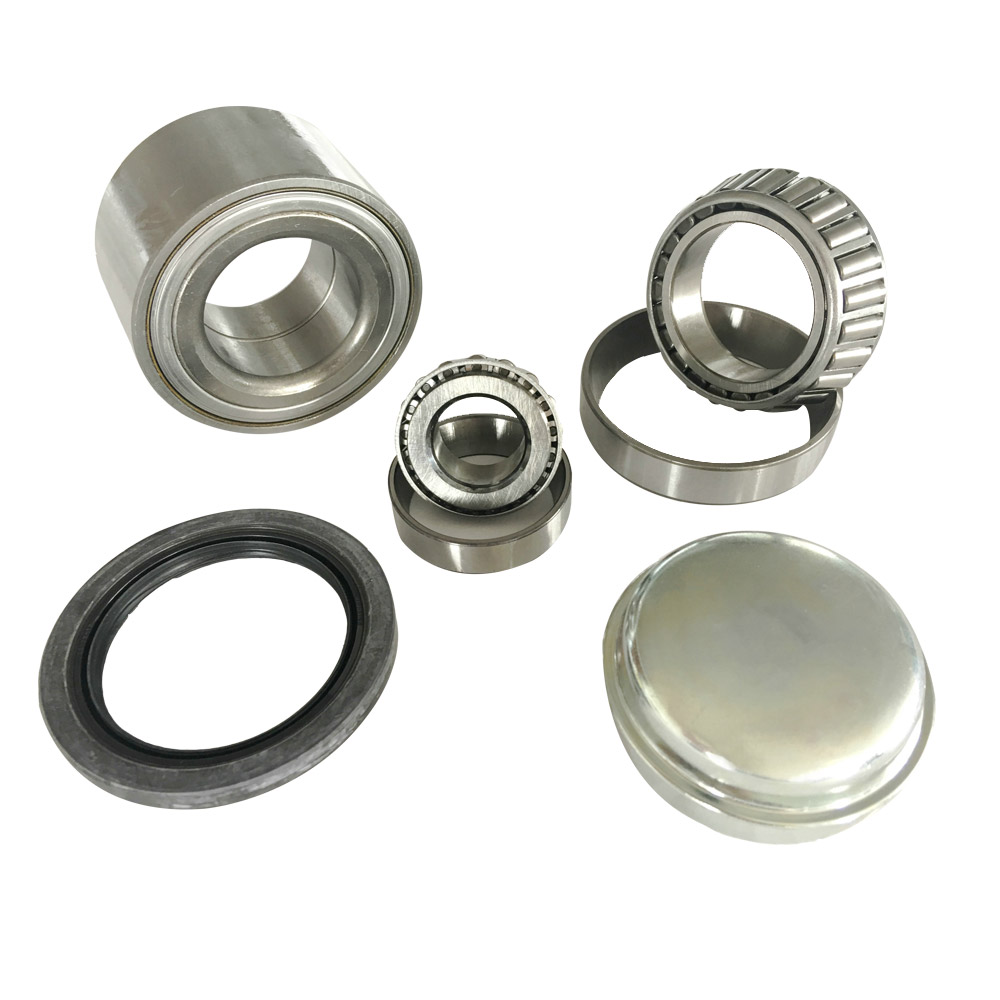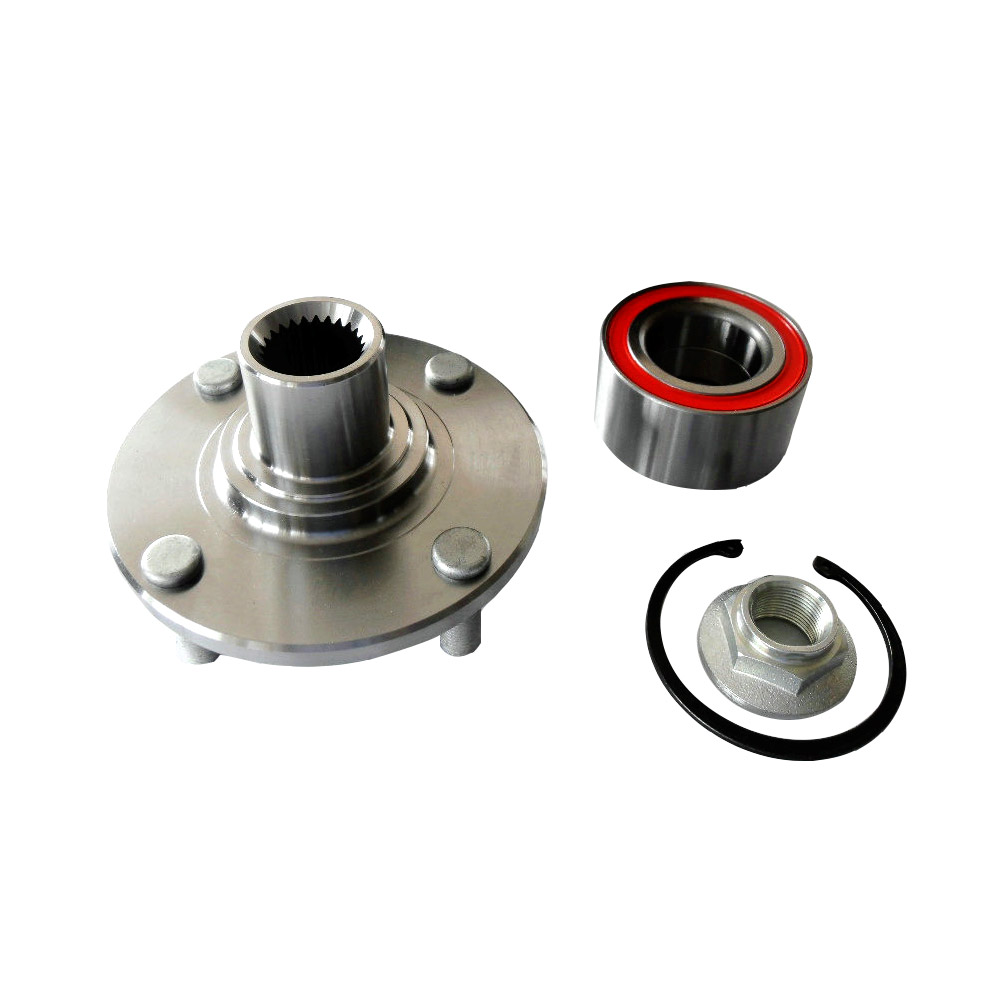Wheel hub bearings are critical components in a vehicle’s suspension and drivetrain system. Despite being relatively small, their impact on vehicle safety, handling, and overall performance is enormous. A properly functioning wheel hub bearing ensures smooth wheel rotation, accurate alignment, and consistent vehicle control, while a worn or damaged bearing can compromise safety and lead to costly repairs.
This article explores how wheel hub bearings affect vehicle safety and performance, the warning signs of failure, maintenance best practices, and factors to consider when choosing high-quality bearings.
Understanding Wheel Hub Bearings
A wheel hub bearing is a set of steel balls or rollers encased in a metal ring (race) and sealed for protection. It is located inside the wheel hub assembly and allows the wheel to rotate freely while supporting the weight of the vehicle. Modern vehicles often use integrated hub assemblies, combining the wheel hub and bearing into one unit for easier installation and improved durability.
Primary Functions:
- Smooth Wheel Rotation – Bearings reduce friction, enabling wheels to spin efficiently with minimal resistance.
- Load Support – They bear the vehicle’s weight, including passengers, cargo, and dynamic forces during driving.
- Alignment Stability – Bearings help maintain precise wheel alignment, ensuring accurate steering and handling.
- Noise and Vibration Reduction – Proper bearings prevent unwanted vibrations and noise caused by uneven wheel movement.
Impact on Vehicle Safety
Wheel hub bearings play a vital role in keeping drivers and passengers safe. A failure can significantly compromise safety in several ways:
1. Steering and Handling
A damaged or worn bearing can cause play or wobble in the wheel, affecting steering precision. In extreme cases, this may lead to the driver losing control of the vehicle during turns or sudden maneuvers.
2. Braking Performance
Wheel hub bearings are closely associated with the vehicle’s brake system. Many modern vehicles incorporate ABS (Anti-lock Braking System) sensors into the hub assembly. A failing bearing can interfere with sensor signals, causing ABS malfunctions and increasing braking distances.
3. Wheel Detachment Risk
In rare but severe cases, a severely worn hub bearing may fail completely, risking wheel detachment while driving—a dangerous scenario that can lead to serious accidents.
4. Vibration and Noise Hazards
A failing wheel hub bearing often produces vibrations or humming noises that increase with speed. These vibrations can mask other important vehicle feedback, such as steering input, making it harder for drivers to detect unsafe driving conditions.

Impact on Vehicle Performance
Apart from safety, wheel hub bearings directly affect vehicle performance, including fuel efficiency, tire wear, and ride comfort.
1. Fuel Efficiency
When bearings are in poor condition, friction increases, making the engine work harder to rotate the wheels. This can reduce fuel economy, especially at highway speeds where frictional losses accumulate over time.
2. Tire Life
Uneven wheel rotation due to faulty bearings can lead to irregular tire wear. This not only reduces tire lifespan but can also compromise traction and handling performance.
3. Ride Comfort
A smooth-running wheel hub bearing ensures minimal vibration and noise. Conversely, a worn bearing can cause a rougher ride, affecting driver comfort and vehicle stability.
4. Suspension and Drivetrain Stress
Excessive play or misalignment caused by failing bearings can transfer additional stress to suspension components, CV joints, and wheel studs, accelerating wear and leading to costly repairs.
Common Signs of Wheel Hub Bearing Failure
Recognizing early warning signs can prevent serious safety issues:
- Noise – Grinding, humming, or growling noises that increase with speed are classic indicators.
- Vibration – Steering wheel or vehicle vibrations, especially when turning, may signal bearing wear.
- Uneven Tire Wear – Bald spots or irregular patterns can point to bearing-related misalignment.
- ABS Warning Light – Modern hub bearings with integrated sensors may trigger ABS alerts when failing.
- Wheel Play – Excessive wheel movement detected when rocking the vehicle while stationary.
Early detection allows for preventive maintenance, saving money and avoiding accidents.
Maintenance Tips
Proper maintenance of wheel hub bearings is essential to ensure safety and optimal performance:
1. Regular Inspections
- Inspect bearings during routine tire rotations or suspension checks.
- Look for abnormal noise, heat, or vibration.
2. Correct Installation
- Use proper torque specifications when installing wheel hub bearings to prevent uneven stress.
- Ensure compatibility with ABS sensors and other electronic systems.
3. Lubrication
- Some older bearings require periodic greasing; modern sealed bearings do not, but checking for leaks is still essential.
4. Timely Replacement
- Follow manufacturer recommendations for mileage or time-based replacement, especially in high-load or harsh driving conditions.
Choosing the Right Wheel Hub Bearing
Selecting the right bearing can make a significant difference in performance and durability:
- OEM vs Aftermarket – OEM bearings are designed for specific vehicle specifications and often ensure compatibility with electronic systems. High-quality aftermarket bearings can be cost-effective alternatives but require careful selection.
- Material Quality – Bearings made of high-grade steel or ceramic offer better resistance to heat, corrosion, and wear.
- Sealing and Protection – Proper seals prevent dirt and moisture ingress, extending lifespan.
- Integrated vs Separate Hub – Integrated hub assemblies simplify replacement but may be more expensive. Separate bearing and hub assemblies allow partial replacement but require more labor.
Environmental and Driving Conditions
Wheel hub bearing lifespan can vary depending on conditions:
- Harsh Driving – Off-road, pothole-ridden, or high-load conditions accelerate wear.
- Weather – Exposure to water, snow, and road salt can corrode bearings and seals.
- Load – Heavy cargo or towing can shorten bearing lifespan.
Regular inspections and timely replacement are essential in these conditions.
Conclusion
Wheel hub bearings may seem like small components, but their role in vehicle safety and performance cannot be overstated. From ensuring smooth wheel rotation and proper alignment to maintaining braking efficiency and ride comfort, these bearings influence almost every aspect of driving.
A worn or damaged wheel hub bearing can lead to safety hazards, including reduced steering control, compromised braking, and even wheel detachment. Additionally, they affect vehicle performance by causing vibrations, uneven tire wear, and increased fuel consumption.
Regular inspections, proper installation, and choosing high-quality bearings—whether OEM or reputable aftermarket—are key steps in maintaining safety and performance. For vehicle owners, understanding the importance of wheel hub bearings helps prevent accidents, reduces maintenance costs, and ensures a smoother, safer driving experience.






